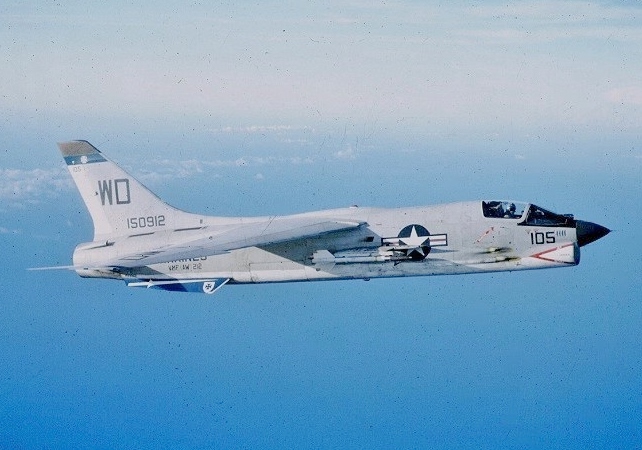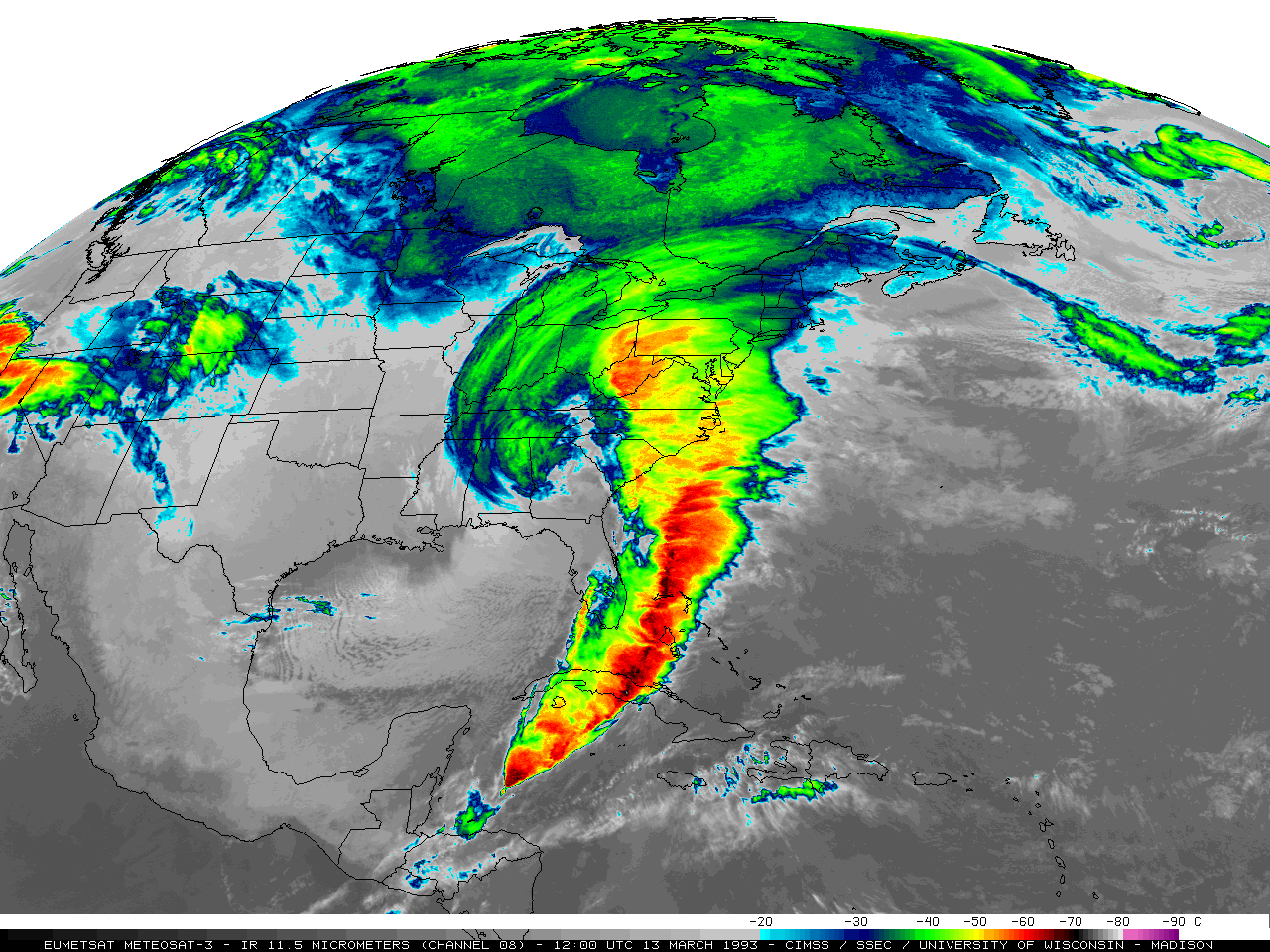Only one person is known to have survived a fall from the top of a thunderstorm, plummeting through a towering cumulonimbus cloud filled with lightning, hailstones and air pressure variations so vast that decompression sickness is the least of a human’s worries when traveling through them. Only one person has ever survived a fall like that, and he landed in North Carolina.

An F-8 Crusader in flight
Lieutenant Colonel William Henry Rankin, born in October of 1920, was a pilot in the United States Marine Corps. A veteran of WWII and the Korean War, Rankin has plenty of experience in the cockpit of his F-8 Crusader as he performed a relatively routine flight on July 26, 1959, from a naval station in Massachusetts to the Marine Corps Air Station in Beaufort, South Carolina.
While making that flight, a thunderstorm had formed below and ahead of Rankin and his wingman. Climbing to fly over the highest storm clouds at a cruising height of 47,000 feet and traveling just below the speed of sound, Rankin experienced engine failing and a fire warning alarm. He attempted to activate auxiliary power, but the lever broke in his hand. As the plane began to fall, Rankin transmitted a message to his wingman briefly explaining the situation and his actions — and ejected, despite the fact that he wasn’t wearing a pressure suit.
Storm systems in the upper atmosphere bear little resemblance to what we experience on the ground. High in the towers of cumulonimbus clouds, winds are whipped into a vortex of shifting patterns and updrafts at airspeeds mimicking a small hurricane as warmer air is pulled above cold and water condenses into crystalline structures that will become rain as they fall to the ground. This is what Rankin had begun to fall into.

Lt Col William Henry Rankin, U.S.M.C.
With an emergency oxygen supply to keep him conscious, Rankin immediately began to suffer frostbite symptoms in the -58 °F air as the difference in air pressure caused his abdomen to swell, eyes to bleed and lungs to struggle as his body decompressed. After falling for minutes, his parachute opened prematurely due to air pressure fluctuations triggering the barometric switch, and Rankin was carried upward by updrafts as hail pelted him and his gear. Lighting and concussive thunder disoriented him as he was carried back into the storm again and again on rising winds. After almost 40 minutes of falling the same nine mile distance, Rankin began to descend toward the ground one last time.
At 6:40 p.m., Rankin’s parachute carried him down into a forest in rural North Carolina, near the town of Ahoskie – a small, rural town in the Inner Banks region. Beaten, bruised, frostbitten and sick from motion and decompression, Rankin ended his flight by getting tangled in the branches of a tree and smacking headfirst into its trunk. Thanks to his helmet, Rankin was saved from further trauma and began to make his way to the nearest road to find help. He caught a ride with a local, called an ambulance, and lived another five decades – even speaking to Time magazine about his experience and writing a book about his fall, titled “The Man Who Rode Thunder.”
While Rankin may have been from Pennsylvania, it was in North Carolina that he made history as the first – and only – person to survive a fall from the top of a cumulonimbus thunderstorm cloud.









Comments on Chapelboro are moderated according to our Community Guidelines